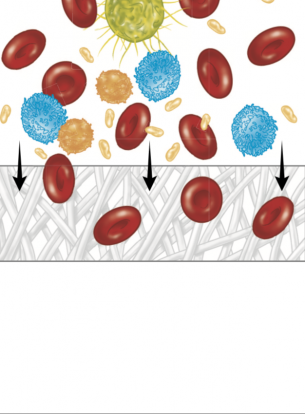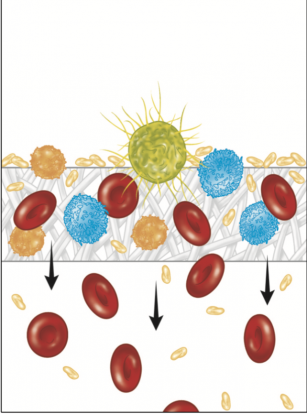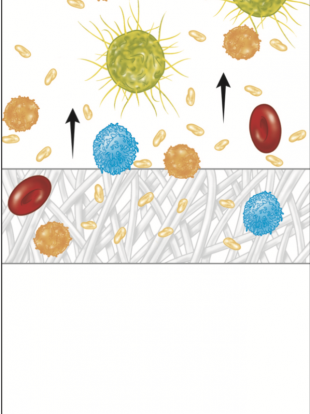Monocytes
Monocytes – TNCs
TNCs (Total Nuclear Cells) mononuclear cell concentration is a new rapid blood filtration technology that allows one to develop a cellular regenerative product of one’s own body.
The system works by drop filtration, taking advantage of gravity, avoiding any procedure that might alter or stress mononuclear cells (such as centrifugation). The system has a membrane that specifically retains the cells by electrical charge, recognizing them by membrane potential, and is able to completely eliminate unaffected components. The system provides a sterile, ready-to-use disposable kit, complete with all the essential components to obtain the product for your body. What makes the system unique is its ability to eliminate the contamination of granulocytes, which are highly proinflammatory cells. The procedure is quick and takes about 20 minutes.
Selective filtration technology provides a productive process that ensures reproducible results regardless of the patient’s biological variables. The system equipped with one-way luer-lock valves ensures total sterility at the processing stage.
Mononuclear cells circulating in peripheral blood are involved in tissue regenerative and reparative phenomena. Unlike PRP, already here we are talking about cells and not growth factors concentrated from the blood (PRP is composed of cell signals, while TNCs are real cells). The presence of a single nucleus in such cells means that they are able to differentiate as needed into specific and characteristic cells of human tissues. According to many scientific and clinical studies, when concentrated and injected at the site of injury, mononuclear cells are able to:
- Polarize macrophages, always present at the site of injury, reversing their course from proinflammatory to anti-inflammatory giving the start for the reparative phase.
- Create exosome release, via paracrine mechanism, leading to new vessel formation and thus extensive neoangiogenesis.
- Have differentiative capacity.
CELL HARVESTING AND CONCENTRATION TECHNOLOGY

1. Peripheral whole blood is processed by passage through the filter

2. Nucleated cells are retained by the selective filtration membrane of the filter. Most red blood cells, platelets and plasma pass through the filter

3. By backflushing the filter with suitable solution (i.e., saline), the nucleated cells are released and concentrated
